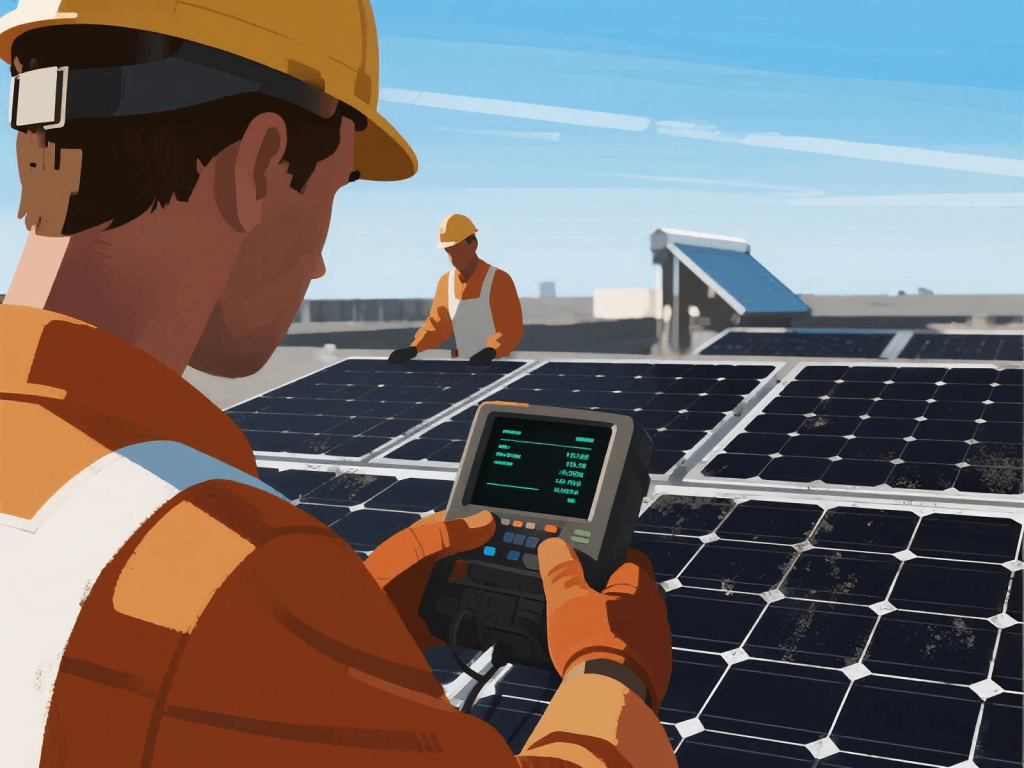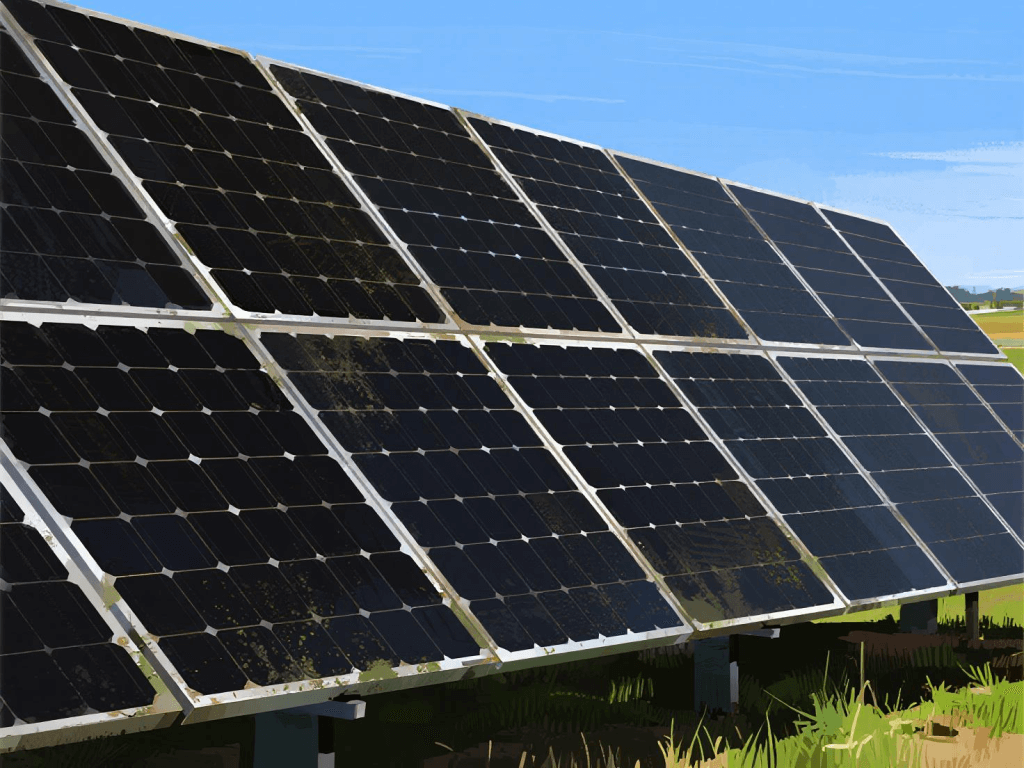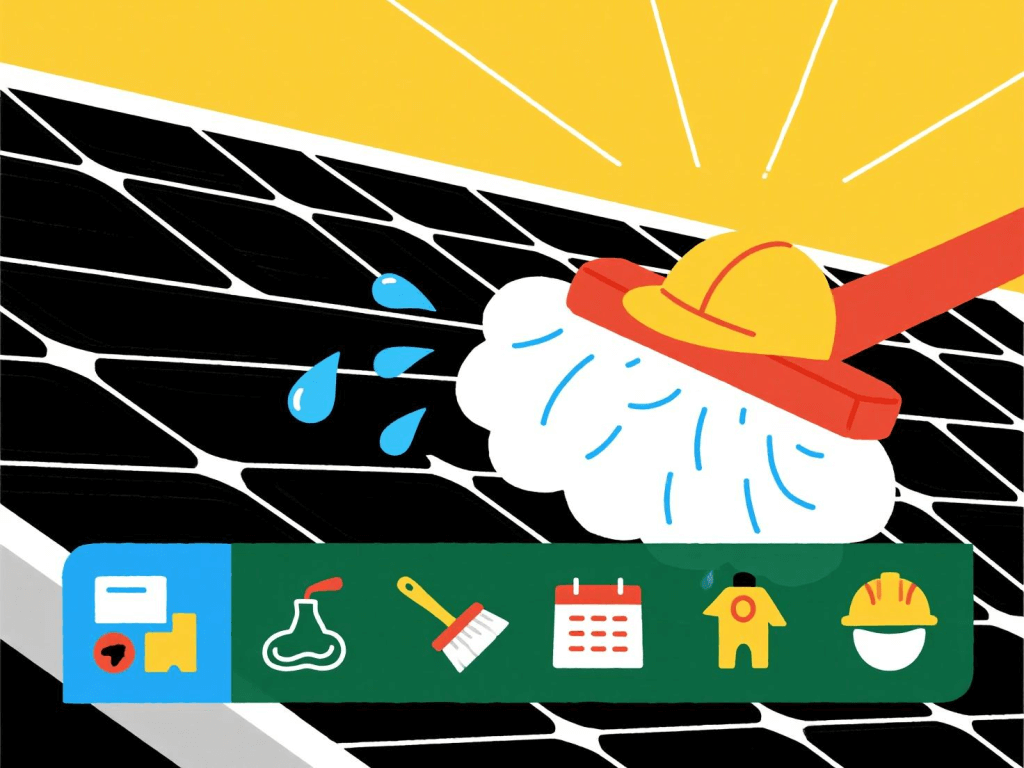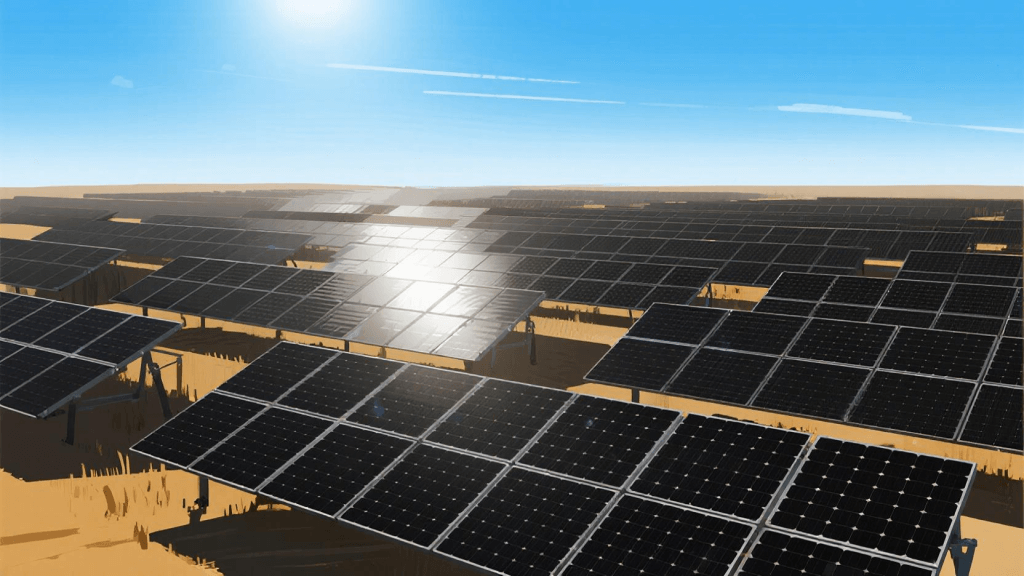Solar photovoltaic (PV) modules are the core components of any solar energy system, relying on sunlight to generate electricity. However, during everyday operation, contaminants such as dust, bird droppings, and leaves accumulate on the panel surface, reducing light absorption and consequently lowering power output. Keeping PV panels clean is essential to ensure stable system performance and long-term returns.
1. Why Is Cleaning Important? — A Key Factor for Sustained High Efficiency
The power generation efficiency of a PV system heavily depends on the cleanliness of the module surface. Even a 10% surface coverage of dirt can cause an 8%–15% drop in energy yield. Prolonged neglect can lead to hotspots, accelerating module degradation and potentially compromising safety.
This issue is especially pronounced in areas with frequent dust storms, low rainfall, or heavy industrial pollution, where contaminants accumulate rapidly and significantly reduce generation capacity.
Regular cleaning is therefore a necessary maintenance practice to maintain high efficiency and extend the service life of the system. For users with aging PV systems, maintaining clean modules not only affects current performance but also preserves long-term asset value.

2. How to Determine When to Clean? — Power Drop Is Not Always Due to Weather
| Inspection Method | Indicators | Recommendations | Applicable Environments |
|---|---|---|---|
| Visual Inspection | Visible dust, bird droppings, leaves, stains | Regular checks; clean promptly if heavily soiled | Arid, dusty, or industrial areas |
| Power Monitoring | Lower-than-expected output on sunny days; no equipment faults | Rule out equipment issues first; consider cleaning | All installation environments |
| Cleaning Frequency | Once every 6–12 months in rainy urban areas | Quarterly cleaning in heavily polluted areas | Adjust according to local climate and pollution levels |
| Abnormal Conditions | Localized heavy soiling or abnormal module output | Prompt cleaning and professional inspection recommended | Industrial zones and high-pollution regions |

3. How to Clean Safely? — Practical Guidelines
Concerned that cleaning might damage your PV panels or pose safety risks? Follow these simple guidelines for safe and effective cleaning:
- When to Clean: Avoid cleaning during peak sunlight hours; early morning or late afternoon are ideal to prevent water spots from rapid evaporation.
- What to Use: Clean water is sufficient; avoid harsh detergents. Use soft brushes or sponges for gentle cleaning.
- How to Clean Safely: Power down the system before cleaning. Handle panels gently and never step on the modules. For rooftop or steep installations, hire professionals.
- After Cleaning: Rinse thoroughly with clean water to remove residues and allow natural air drying.
Adhering to these steps protects your panels and ensures your personal safety.
4. Tips for Efficient and Easy Maintenance
- Regularly monitor power output data to identify cleaning needs promptly.
- Leverage natural rain in wetter climates to reduce cleaning frequency; increase cleaning efforts in dry, dusty environments.
- Avoid chemical cleaners; plain water suffices to protect module surfaces from damage.
- Prioritize safety by wearing non-slip footwear and avoid solo cleaning, especially at heights or slippery conditions.
- For large-scale or hard-to-access installations, consider professional maintenance services.

5. Conclusion
Maintaining clean solar PV panels is crucial for ensuring efficient and stable system operation. Through regular inspections, informed decision-making, and proper cleaning practices, you can boost power generation and extend equipment lifespan, maximizing your green energy investment.
Whether you are a residential user or commercial client, adopting a cleaning schedule tailored to your environment and emphasizing safety will help your PV system perform at its best.
Commit to effective cleaning maintenance to convert sunlight into reliable, sustainable green electricity that supports your life and business.

